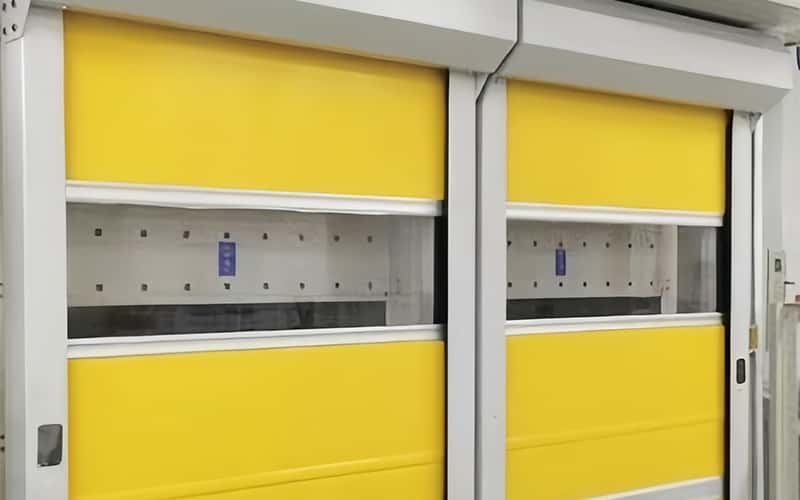
High speed doors are critical components in modern industrial and commercial facilities, providing quick and efficient access while maintaining environmental control. However, like any mechanical system, they can experience issues that may disrupt operations. Understanding the root causes and solutions to these problems can help maintain the longevity and efficiency of your high speed doors. Below, we'll explore common malfunctions and offer practical solutions.
1. Brake Slippage in High Speed Doors
Brake slippage is a common issue that can affect the performance of high speed doors. Here are the main causes and solutions:
Brake Pad Contamination: If the brake pads are contaminated with oil, the braking system may slip, compromising the door's stopping power. To resolve this, clean the brake pads thoroughly with gasoline to remove any oil residue.
Reduced Spring Compression: Over time, the compression force of the brake's spring may decrease, leading to ineffective braking. In such cases, replacing the spring is necessary to restore proper brake function.
Misaligned Electromagnet: If the electromagnet is not properly aligned, it can cause brake slippage. Reinstall the electromagnet correctly to ensure it functions as intended.
2. Manual Chain Operation Issues
A high speed door's manual chain is an essential backup for manual operation, especially during power outages. However, it may sometimes become difficult to operate. Here's why:
Chain Jammed in Cross Slot: The ring chain may get jammed in the cross slot, preventing smooth operation. To fix this, straighten the chain to ensure it runs freely through the mechanism.
Loose Electromagnet Fasteners: If the fasteners on the electromagnet are loose, the chain might become difficult to pull. Retighten the fasteners to restore normal operation.
3. Failure in Counterweight Descent
If the counterweight descent mechanism fails, the door may not lower properly, which can pose significant safety risks. The following are common causes and solutions:
Deformed Manual Lever: A deformed manual lever can prevent the counterweight from descending correctly. Replacing the lever will resolve this issue.
Excessive Gap Between Lever and Washer: A large gap between the manual lever and the washer can disrupt the descent mechanism. Reducing this gap will allow the door to function smoothly.
Gearbox Motor Lubrication Failure: If the lubrication in the gearbox motor fails, it can lead to mechanical failure. Replacing the grease in the gearbox will restore proper operation.
4. Best Practices for Operating and Maintaining High Speed Doors
Proper use and maintenance of high speed doors are crucial for their long-term performance. It's important to set the opening and closing speeds according to your operational needs. Setting the speed too high can lead to unnecessary energy consumption and increased wear on the drive components. For larger doors, consider adjusting the speed to a lower setting to protect the frequency converter and extend its lifespan.
In conclusion, regular maintenance and adherence to operational best practices can prevent many common issues with high speed doors, ensuring they remain reliable and efficient in your facility.








